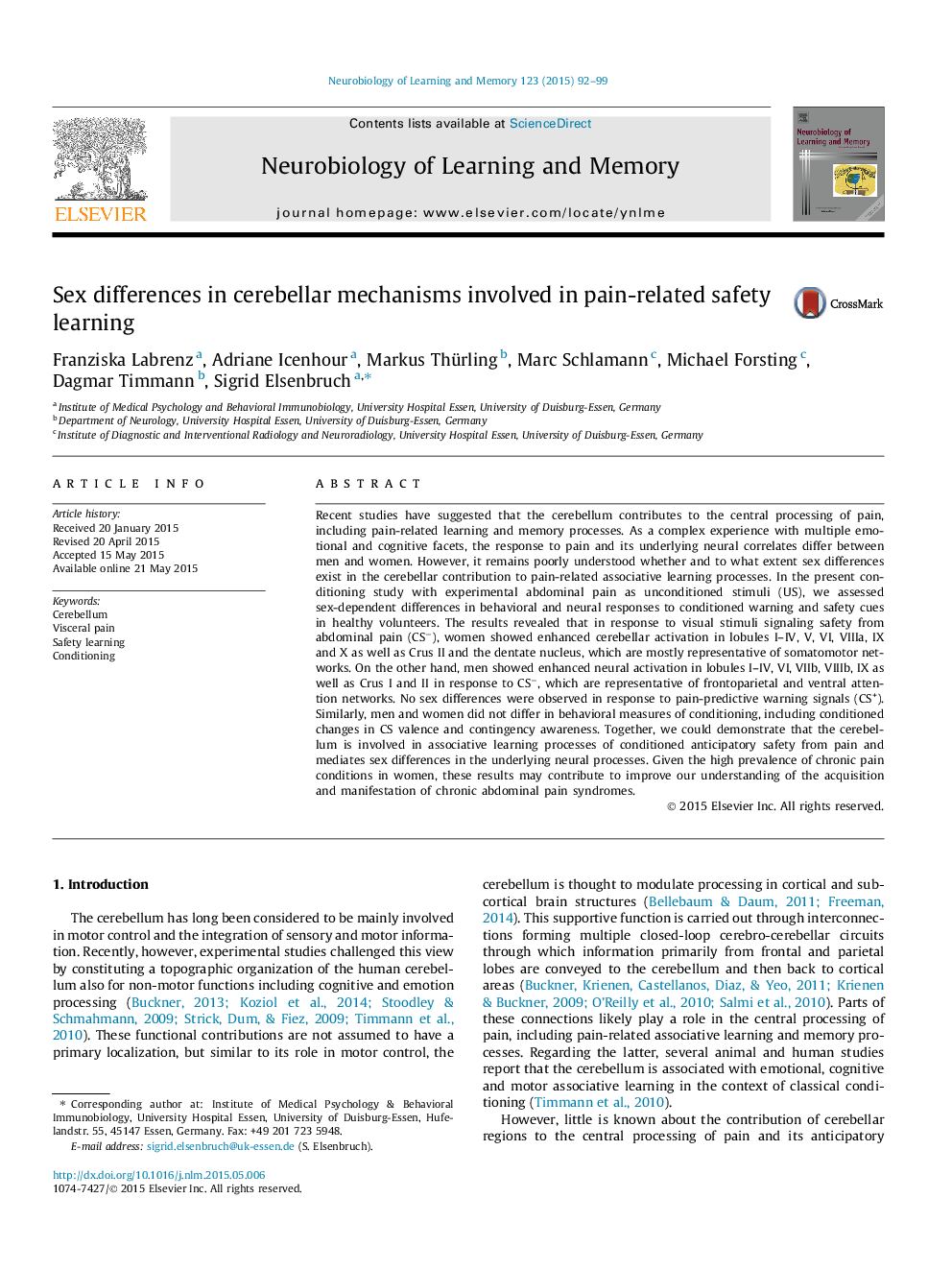| کد مقاله | کد نشریه | سال انتشار | مقاله انگلیسی | نسخه تمام متن |
|---|---|---|---|---|
| 936451 | 1475152 | 2015 | 8 صفحه PDF | دانلود رایگان |
• We assessed sex differences during pain-related conditioning in the cerebellum.
• We analyzed neural responses during aversive learning and extinction.
• Results showed sex differences in neural responses to conditioned safety from pain.
• Sexually dimorphic BOLD responses were evident during acquisition but not extinction.
• The cerebellum appears crucial in embedding safety signals into pain-related fear.
Recent studies have suggested that the cerebellum contributes to the central processing of pain, including pain-related learning and memory processes. As a complex experience with multiple emotional and cognitive facets, the response to pain and its underlying neural correlates differ between men and women. However, it remains poorly understood whether and to what extent sex differences exist in the cerebellar contribution to pain-related associative learning processes. In the present conditioning study with experimental abdominal pain as unconditioned stimuli (US), we assessed sex-dependent differences in behavioral and neural responses to conditioned warning and safety cues in healthy volunteers. The results revealed that in response to visual stimuli signaling safety from abdominal pain (CS−), women showed enhanced cerebellar activation in lobules I–IV, V, VI, VIIIa, IX and X as well as Crus II and the dentate nucleus, which are mostly representative of somatomotor networks. On the other hand, men showed enhanced neural activation in lobules I–IV, VI, VIIb, VIIIb, IX as well as Crus I and II in response to CS−, which are representative of frontoparietal and ventral attention networks. No sex differences were observed in response to pain-predictive warning signals (CS+). Similarly, men and women did not differ in behavioral measures of conditioning, including conditioned changes in CS valence and contingency awareness. Together, we could demonstrate that the cerebellum is involved in associative learning processes of conditioned anticipatory safety from pain and mediates sex differences in the underlying neural processes. Given the high prevalence of chronic pain conditions in women, these results may contribute to improve our understanding of the acquisition and manifestation of chronic abdominal pain syndromes.
Journal: Neurobiology of Learning and Memory - Volume 123, September 2015, Pages 92–99
